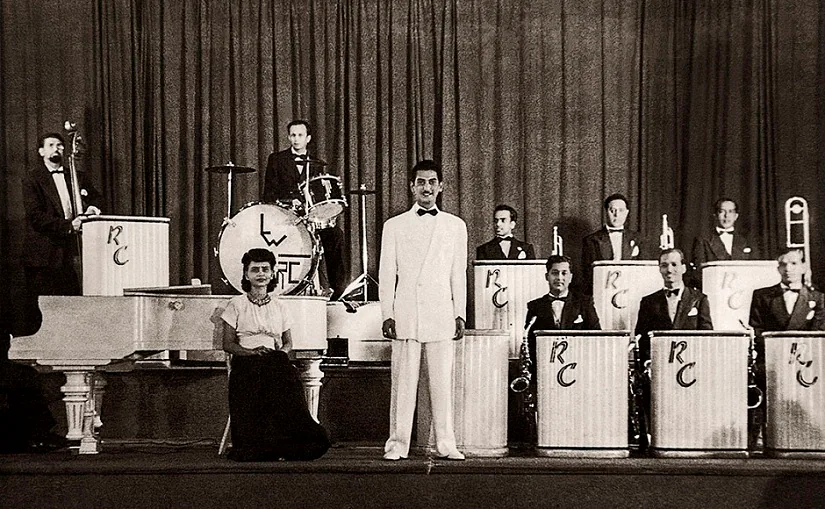
Arriving in India in the mid-1930s in search of performance opportunities and a better quality of life, African American jazz musicians significantly contributed to the growth of jazz and Western popular music in the country. In 1935, Bombay’s premier hotel, the Taj Mahal, hired the first all-African-American jazz band to play in India. The eight-member band, led by Leon Abbey, a violinist from Minnesota, included a host of experienced musicians who had performed alongside jazz legends. Their success and influence attracted local Anglo-Indian and Goan musicians, who began to perform jazz in the cosmopolitan centers of India. In Bombay, Goan musicians incorporated Western popular music into local cabaret performances and even into early film songs. In this context, African American musicians played a pivotal role in broadening the landscape of Western popular music in India, shaping early Bombay cabaret songs and the hybrid sounds of the emerging film industry.


The presence of jazz orchestras in Bombay during the 1940s and 1950s highlighted various historical connections. These orchestras supplied essential musical resources for creating cabaret scenes in Hindi-language films. African American jazz musicians residing in India inspired local musicians to join urban jazz orchestras, which led to the development of a vibrant jazz cabaret economy. This economy was centered around recording in film studios, collaborating with film music composers, performing as backdrop dance bands in movies, and engaging in ghost composing and arranging.

Furthermore, ragtime and jazz were performed in Calcutta’s hotels and clubs, which were vital to the social lives of the elite during colonial India. While the musicians were often European or American, especially when foreign bands were brought in for a season, some ensembles included Anglo-Indian members. These Anglo-Indian musicians served as intermediaries, transmitting theoretical knowledge of Western harmony and teaching the use of Western instruments to subsequent generations of musicians in post-independence India. They were also the first Indian musicians to perform jazz and blues standards in Calcutta and Bombay around World War II, playing a significant role in the spread of jazz and blues music throughout the country.
This according to “Orchestras and musical intersections with regimental bands, blackface minstrel troupes, and jazz in India, 1830s–1940s” by Bradley G. Shope, Global perspectives on orchestras: Collective creativity and social agency, ed. by Tina K. Ramnarine (New York City: Oxford University Press, 2017, 226–241; RILM Abstracts of Music Literature, 2017-33724), and “Jazz and race in colonial India: The role of Anglo-Indian musicians in the diffusion of jazz in Calcutta” by Stéphane Dorin (Jazz research journal 4/2 [November 2010] 123–140; RILM Abstracts of Music Literature, 2010-19314).
Also, visit the online exhibit Finding the groove: Pioneers of jazz in India 1930s-1960s. The exhibit is based on archival materials collected by Naresh Fernandes at the Archive and Research Center for Ethnomusicology (ARCE).


